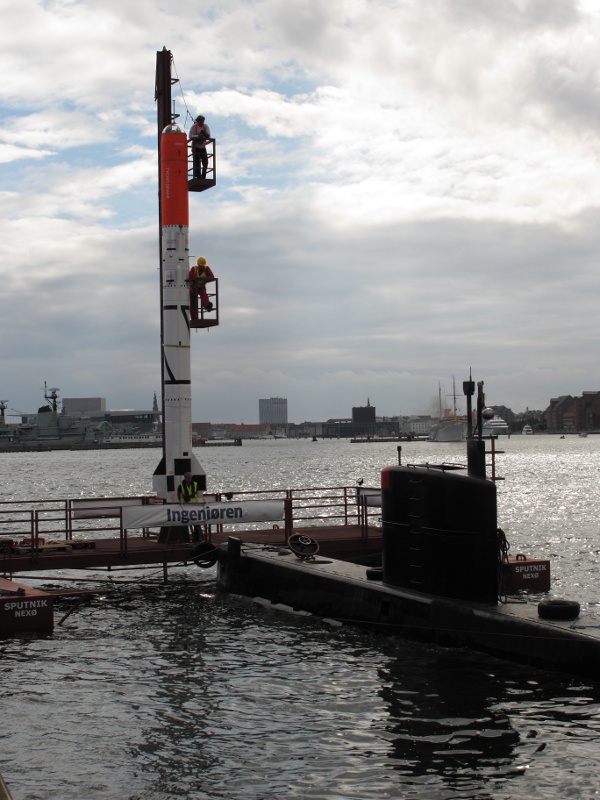Today was a good day for the Danish rocket builders Copenhagen Suborbitals.
They launched the small rocket Nexoe (Nexø) 2 this morning Danish time from a self built sea launch platform about 35km West of the island Bornholm in the Baltic Sea. The rocket fired perfectly and burned for 33 seconds, and reached an altitude of 6.500 meters, the parachute unfolded beautifully and the rocket was recovered nicely.The launch was streamed with a somewhat interrupted stream via Youtube. The interruptions in the streaming are due to the distance, and some rising water vapour in the warm (for the time of the year) Baltic Sea, and also due to the large distance and wide bandwidth of the signals.
I followed the stream from about half an hour before launch, until the rocket was recovered and brought to the launch control ship.
The planned maximum altitude of 13000m was not reached, because the burn time for the engine was only 33 out of the planned 45 seconds, but never the less I consider today’s flight a strong success, many new systems were tested, and functioned well.
Congratulations to Copenhagen Suborbitals with the successful launch.


